The Kanchenjunga Base Camp Trek offers trekkers an extraordinary opportunity to explore one of the world’s most stunning mountain regions. With a carefully designed itinerary spanning 17 days, adventurers encounter diverse ecosystems and rich cultural interactions while tackling the challenges of high altitudes. Starting from Suketar, the trek unfolds breathtaking views and unique experiences, especially during spring and autumn. However, success hinges on proper preparation and understanding the nuances of this strenuous journey. So, what should trekkers consider before embarking on this remarkable adventure?
Key Points
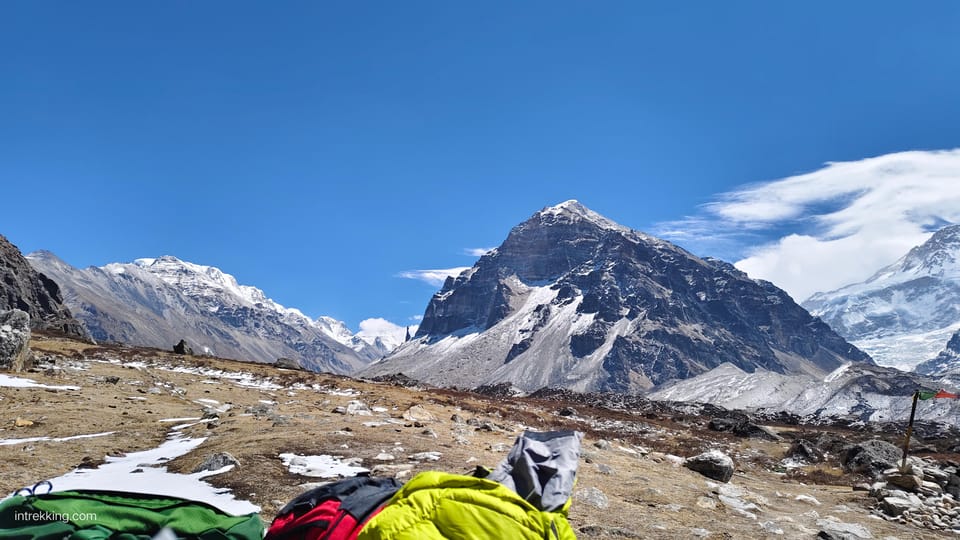
- The Kanchenjunga Base Camp Trek spans 17 days, starting and ending in Suketar, Taplejung, with a strenuous yet rewarding experience.
- Best trekking seasons are spring (March to May) and autumn (September to November) for optimal weather and scenery.
- The trek features stunning views of Mount Kanchenjunga and diverse ecosystems, including subtropical forests and high-altitude landscapes.
- Cultural interactions with local ethnic groups like Limbus and Sherpas enhance the trekking experience through traditional practices and cuisine.
- Essential preparations include proper gear, acclimatization to avoid altitude sickness, and understanding local customs for a safe journey.
It's also worth checking out some other tours and experiences nearby.
Trek Overview and Details
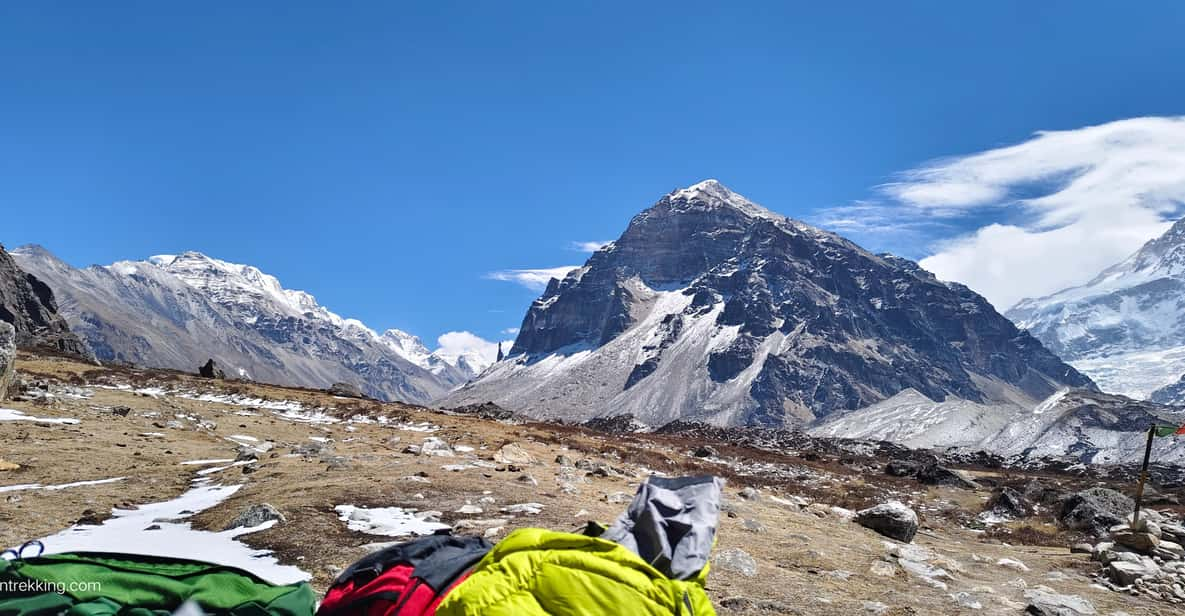
The Kanchenjunga Base Camp Trek spans 17 days and is perfect for adventurous trekkers seeking a strenuous challenge amidst breathtaking mountain scenery.
This trek, often regarded as one of the most rewarding in the Himalayas, starts and ends in Suketar, Taplejung, which is accessible by flight or a long drive from Kathmandu or Bhadrapur.
Spring (March to May) and autumn (September to November) are the best seasons to embark on this journey.
The trek is priced from £1,113.46 per person, with options for free cancellation up to 24 hours in advance.
Travelers can reserve their spot today and pay later, making it a practical choice for those looking to explore this stunning region of Nepal.
Trek Highlights
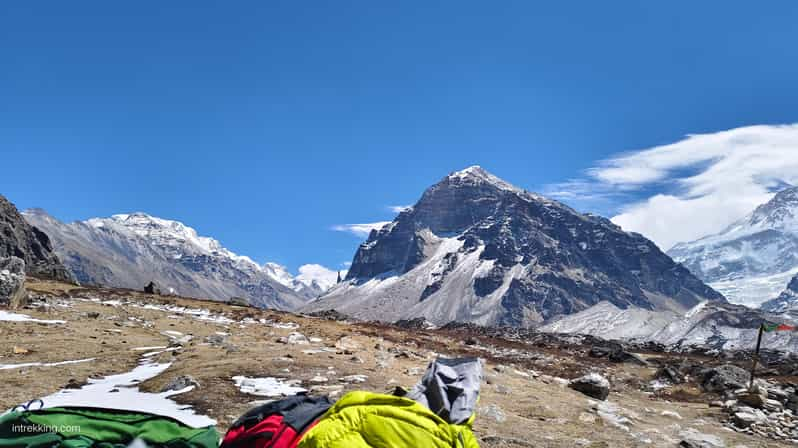
Experience breathtaking views of Mount Kanchenjunga, the world’s third-highest peak, as trekkers embark on a journey through diverse ecosystems and remote villages.
The trek showcases lowland subtropical forests, alpine grasslands, and stunning high-altitude landscapes, offering a unique glimpse into the region’s rich biodiversity.
Trekkers will encounter remote villages, engaging with local ethnic groups like the Limbus and Sherpas, deepening their cultural understanding.
High mountain passes, including Sinion La and Mirgin La, provide panoramic vistas that are simply unforgettable.
Along the way, trekkers marvel at magnificent glaciers and cascading waterfalls.
Unlike the more crowded Everest or Annapurna trails, this trek offers a sense of solitude, enhancing the overall experience in nature’s pristine beauty.
Itinerary Overview
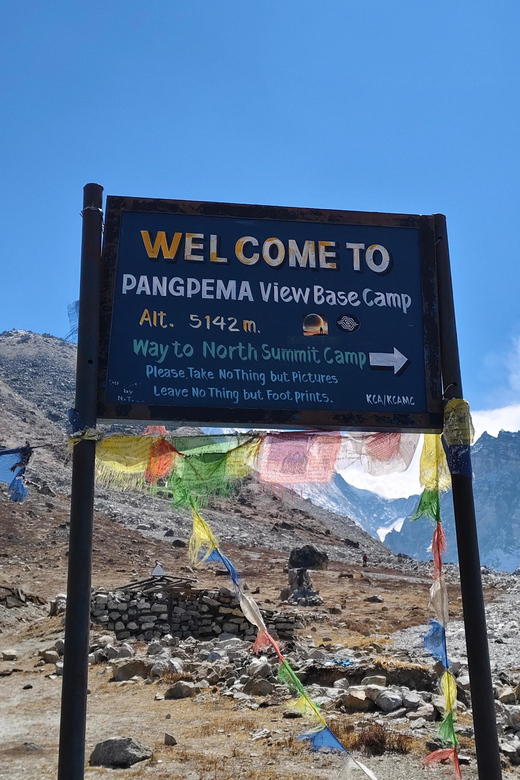
Trekking through the breathtaking landscapes of Kanchenjunga requires careful planning, and the itinerary provides a detailed roadmap for a remarkable 17-day adventure.
Day one kicks off with a flight to Bhadrapur, followed by a drive to Kanyam. The journey continues with a drive to Suketham on day two.
Over the following days, trekkers will ascend to Ghunsa, Khangpachen, and Lhonak, with a day dedicated to visiting North Base Camp. After a well-deserved rest in Ghunsa, the trek resumes towards Selele Base Camp, Cheram, and Ramchaur.
The adventure culminates with a return trek to Tapethok, a drive to Taplejung, and concluding with a flight back to Kathmandu on day 17.
This itinerary promises unforgettable experiences at every turn.
Inclusions and Exclusions
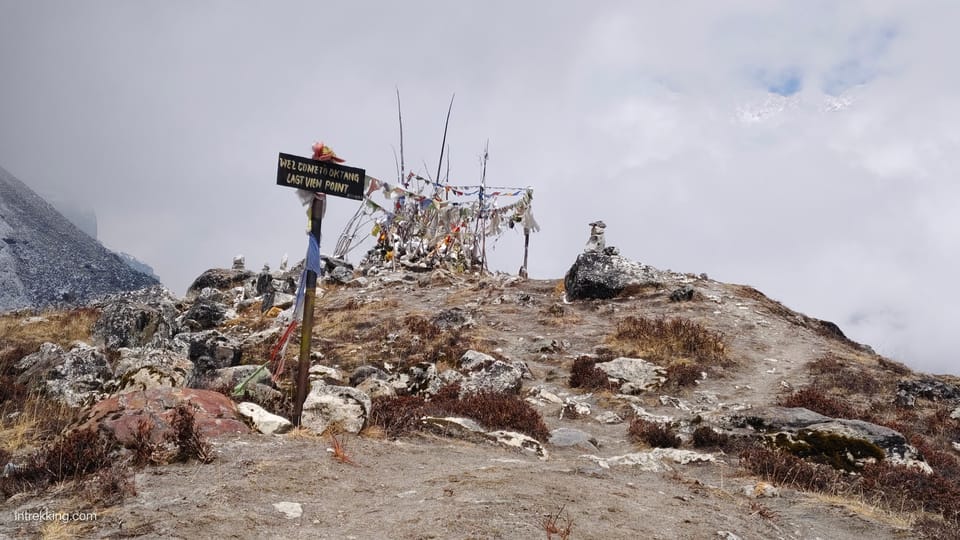
Inclusions for the Kanchenjunga Base Camp Trek typically cover essential services like hotel pickups, domestic flights, and transportation between key points, ensuring a smooth journey for every trekker.
Travelers can expect a private Jeep transfer from Bhadrapur to Kanyam, along with shared transportation from Taplejung to Biratnagar. An experienced, English-speaking, government-licensed guide accompanies trekkers, enhancing their understanding of the local culture and environment.
Plus, the trek includes meals and accommodation along the route, providing comfort and sustenance during the adventure.
However, trekkers should note that personal expenses, travel insurance, and certain meals may not be included, so planning ahead is crucial for a hassle-free experience.
Best Time to Trek
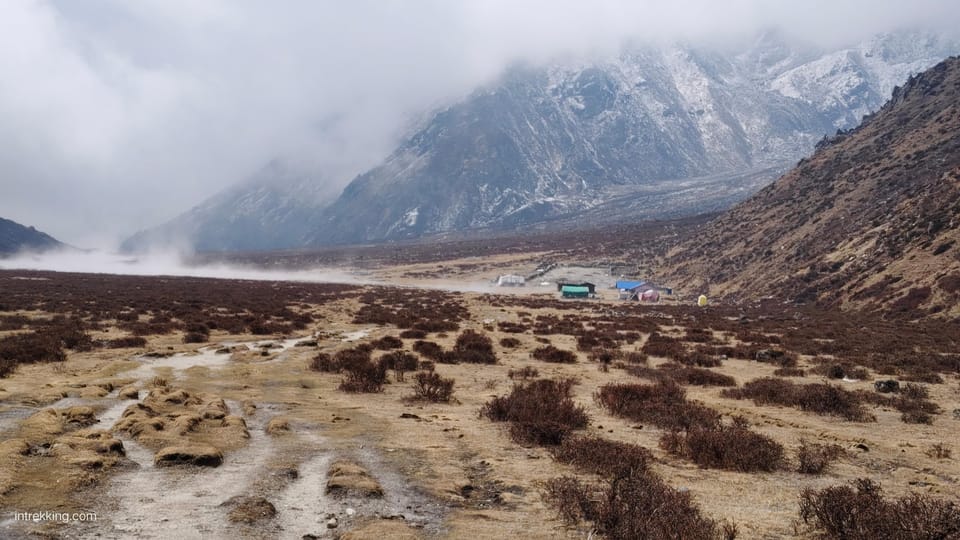
The best time to embark on the Kanchenjunga Base Camp Trek is during the spring months of March to May and the autumn months of September to November, when the weather is generally stable and the views are breathtaking.
During spring, trekkers can enjoy vibrant wildflowers and clear skies, ideal for photography. Autumn offers crisp air and stunning fall colors, making every step a visual delight.
While summer brings heavy rainfall and winter can be harsh, these two seasons provide the perfect mix of pleasant temperatures and visibility.
Trekkers should plan their journey around these windows to experience the majestic landscapes and rich biodiversity of the Kanchenjunga region at its best.
Preparation and Packing Tips
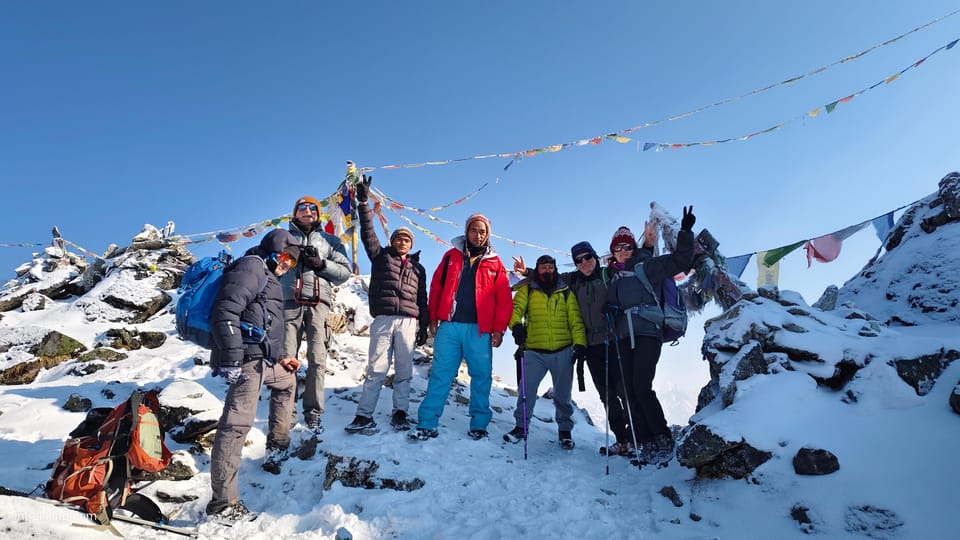
Planning for the Kanchenjunga Base Camp Trek involves careful preparation and packing to ensure a safe and enjoyable experience amidst the stunning landscapes and diverse ecosystems. Trekking in remote areas requires specific gear, so here’s a handy packing guide:
| Essential Gear | Clothing | Personal Items |
|---|---|---|
| Trekking poles | Waterproof jacket | First aid kit |
| Sleeping bag | Thermal layers | Sunscreen |
| Water purification | Trekking boots | Insect repellent |
| Headlamp | Warm hat and gloves | Power bank |
Focusing on these essentials will help trekkers stay comfortable and ready for the challenges ahead. Proper planning not only enhances enjoyment but also ensures safety in unpredictable mountain conditions.
Cultural Experiences
Trekking through the Kanchenjunga region offers adventurers a unique chance to enjoy the rich cultures of the local ethnic groups, such as the Limbus and Sherpas, who call these remote villages home.
Travelers can engage in traditional practices like weaving, farming, and cooking, often shared by welcoming locals.
Visiting quaint monasteries, trekkers gain insights into the spiritual life of the communities, while colorful festivals showcase vibrant customs and music.
Sampling local cuisine, like dal bhat and momo, adds a flavorful dimension to the experience.
On top of that, chatting with villagers about their daily lives fosters a deeper understanding of their heritage, making the trek not just a physical journey, but a cultural exploration that enriches the soul.
Safety and Health Considerations
Engaging with local cultures enriches the trekking experience, but it’s important to prioritize safety and health considerations throughout the Kanchenjunga Base Camp Trek.
Trekkers should acclimatize properly to avoid altitude sickness, which can affect anyone, regardless of fitness level. Staying hydrated and eating nutritious meals is crucial, especially in remote areas. It’s wise to carry a basic first aid kit, including medication for headaches, nausea, and gastrointestinal issues. Trekkers should also inform guides about any pre-existing medical conditions.
Weather can change rapidly, so layering clothing and being prepared for rain or snow is essential.
Lastly, respecting local customs and wildlife ensures a safe and enjoyable journey while fostering positive interactions with the communities along the trek.
Here's a few more nearby tours and experiences we think you'll like.
Frequently Asked Questions
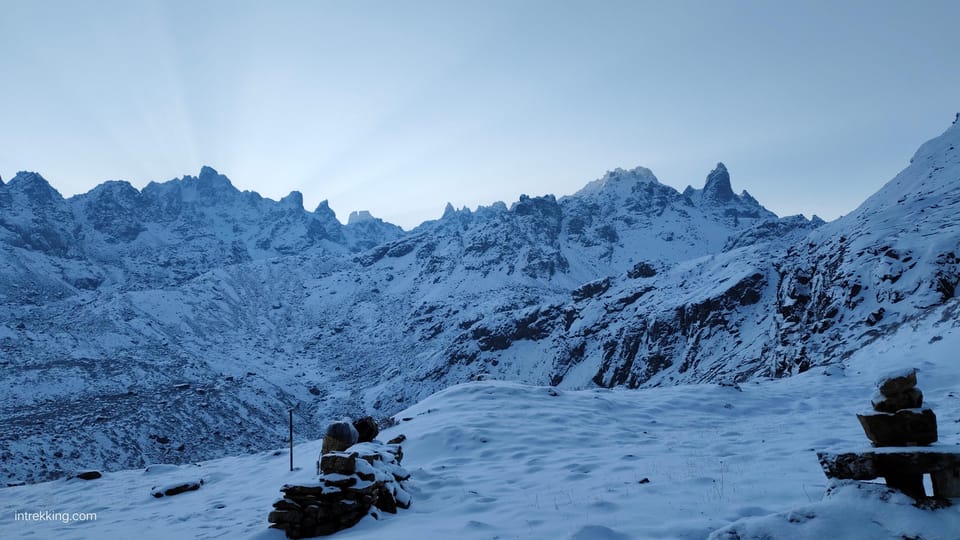
What Is the Altitude of Kanchenjunga Base Camp?
The altitude of Kanchenjunga Base Camp is approximately 5,143 meters. This elevation presents a challenging environment, offering trekkers stunning views and unique experiences, while also requiring proper acclimatization to ensure safety and enjoyment throughout the journey.
Are There Any Age Restrictions for This Trek?
There aren’t strict age restrictions for the trek, but participants should be physically fit and capable of handling strenuous activities. It’s advisable for older trekkers to consult with a doctor before embarking on such an adventure.
Can I Hire a Porter for My Luggage?
Yes, travelers can hire a porter for their luggage. This option makes trekking easier, allowing individuals to enjoy the scenery while ensuring their belongings are safely transported. Porters are experienced and reliable, enhancing the trekking experience.
What Type of Accommodation Is Available During the Trek?
During the trek, travelers can expect a mix of teahouses and lodges offering basic amenities. Most places provide cozy rooms, shared bathrooms, and local meals, ensuring a comfortable experience amidst stunning mountain scenery.
Is Travel Insurance Necessary for This Trek?
Travel insurance’s essential for trekkers. It covers unforeseen events like accidents or cancellations, ensuring peace of mind. Without it, one risks significant losses, especially in remote areas where medical help might be limited.
Not for you? Here's more of our most recent tour reviews happening neaby
- Mardi Magic: A 14-Day Photography Trek & Tour in Nepal
- 8 Days Tour in Nepal (Accommodation- 5 Star Hotel)
- Annapurna Base Camp Trek
- From Kathmandu: Tsho Rolpa Lake Trek Rolwaling Valley Trek
- Gokyo Ri Trek in 11 Days
- 9-Days, All Nepal Luxury Tour With Kathmandu and Pokhara
- From Kathmandu : 15 Day Langtang & Gosaikunda Private Trek
- From Kathmandu: 23 Day Kanchenjunga Circuit Trek
- Annapurna Base Camp Trek With Children
- Kathmandu: Mardi Himal Trek & Nepal Photography Guided Tour
- Everest Base Camp Trek (14 Days)
- Annapurna Base Camp Trek
- Annapurna Base Camp & Mardi Himal Base Camp Trek -13 Days
- Everest Base Camp Heli Tour Group Joining
- From Kathmandu: 13 Days Gosaikunda Trek With Langtang Valley
Recap
To sum it up, the Kanchenjunga Base Camp Trek offers an unforgettable adventure through some of the most stunning landscapes on Earth.
With its rich cultural experiences and breathtaking views, trekkers leave with lasting memories.
Proper preparation, understanding the best times to trek, and prioritizing safety are key to enjoying this journey.
Whether you’re an experienced hiker or a newcomer, the Kanchenjunga trek promises an enriching experience that’s well worth the effort.
